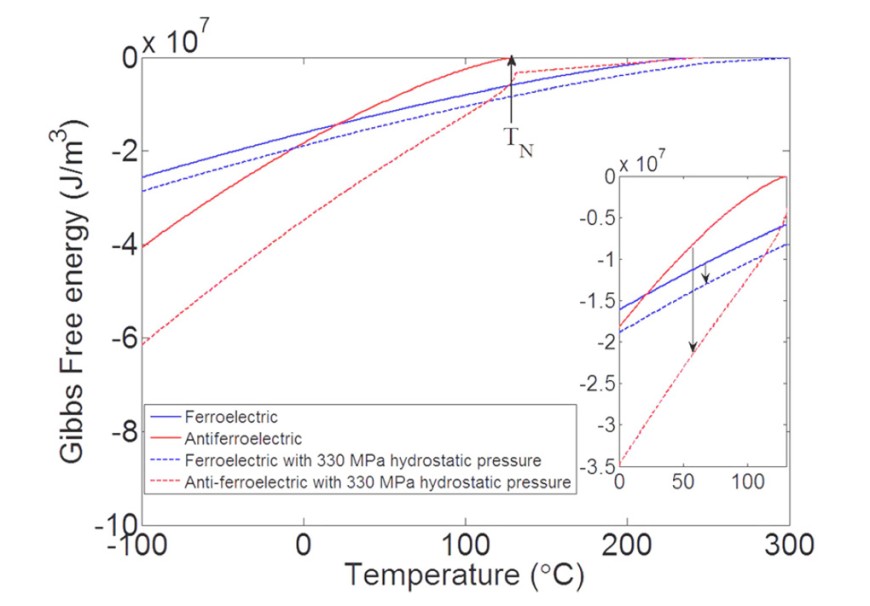Enhanced performance of ferroelectric materials under hydrostatic pressure
New Publication in “Journal of Applied Physics”
2017/12/14

Authors: Aditya Chauhan, Satyanarayan Patel, Shuai Wang, Nikola Novak, Bai-Xiang Xu, Peng Lv, Rahul Vaish, and Christopher S. Lynch
Mechanical confinement or restricted degrees of freedom have been explored for its potential to enhance the performance of ferroelectric devices. It presents an easy and reversible method to tune the response for specific applications. However, such studies have been mainly limited to uni- or biaxial stress. This study investigates the effect of hydrostatic pressure on the ferroelectric behavior of bulk polycrystalline Pb0.99Nb0.02(Zr0.95Ti0.05)0.98O3. Polarization versus electric field hysteresis plots were generated as a function of hydrostatic pressure for a range of operating temperatures (298–398 K). The application of hydrostatic pressure was observed to induce anti-ferroelectric like double hysteresis loops. This in turn enhances the piezoelectric, energy storage, energy harvesting, and electrocaloric effects. The hydrostatic piezoelectric coefficient (dh) was increased from 50 pC/N (0MPa) to ~900 pC/N (265 MPa) and ~3200 pC/N (330MPa) at 298K. Energy storage density was observed to improve by more than 4 times under pressure, in the whole temperature range. The relative change in entropy was also observed to shift from ~0 to 4.8 J/(kg.K) under an applied pressure of 325MPa. This behavior can be attributed to the evolution of pinched hysteresis loops that have been explained using a phenomenological model. All values represent an improvement of several hundred percent compared to unbiased performance, indicating the potential benefits of the proposed methodology.



